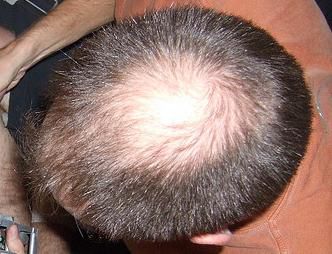-
 Disinfectants
Disinfectants
-
 Patella
Patella
-
 Coordination bond
Coordination bond
-
 Microblogging
Microblogging
-
 Fovea
Fovea
-
 S-Video
S-Video
-
 Smallpox virus
Smallpox virus
-
 Transferase
Transferase
-
 Uterus
Uterus
-
 Satellite image
Satellite image
-
 NexGuard
NexGuard
-
 Leonids
Leonids
-
 Compression
Compression
-
 Yellow dwarf
Yellow dwarf
-
 Internal tide
Internal tide
-
 Saros
Saros
-
 Aber
Aber
-
 Rectrice
Rectrice
-
 Noma
Noma
-
 Xerophile
Xerophile
-
 Direct thrombin inhibitor
Direct thrombin inhibitor
-
 ISRO
ISRO
-
 Scute
Scute
-
 Atmosphere
Atmosphere
-
 Neutron star
Neutron star
-
 Fibrocystic breast disease
Fibrocystic breast disease
-
 Cam
Cam
-
 Wire drawing
Wire drawing
-
 Ferralisation
Ferralisation
-
 Volcanism
Volcanism
Alopecia
Alopecia is lack of hair following accelerated abnormal hair loss (alopecia).
Symptoms of alopecia
Normal hair loss is 50 to 100 hairs per day. Alopecia develops when a person loses more than 100 hairs per day over a long period of time. As a person has approximately 100,000 hairs, the number of hairs on the scalp declines gradually. Some areas of the scalp are more affected than others (crown of the scalp, temporal areas) although alopecia can also lead to uniform hair loss.
Causes of alopecia
There are several forms and therefore several causes of alopecia.
- The most common form is androgenic alopecia. This is hereditary and mostly affects men (70%, sometimes even young people).
- Acute alopecia is due to physiological stress (chemotherapy, nutritional deficiencies, iron deficiency, hormone problems, acute irradiation, etc.).
- Localised alopecia is caused by local skin problems (scarring, tumour, burn, parasites).
- Congenital alopecia is an absence of hair from birth.
- Localised auto-immune alopecia (alopecia areata) occurs over the whole scalp (alopecia totalis) or over the whole body (alopecia universalis).
Treatment of alopecia
Hormonal treatments can slow hairloss although there is not yet an effective treatment to make hair regrow. However, hair implants are possible although the technique is expensive.
 Alopecia means all forms of hair loss and can affect either sex. © Mike Burn, Flickr, CC by-sa 2.0
Alopecia means all forms of hair loss and can affect either sex. © Mike Burn, Flickr, CC by-sa 2.0
Latest
Fill out my online form.



